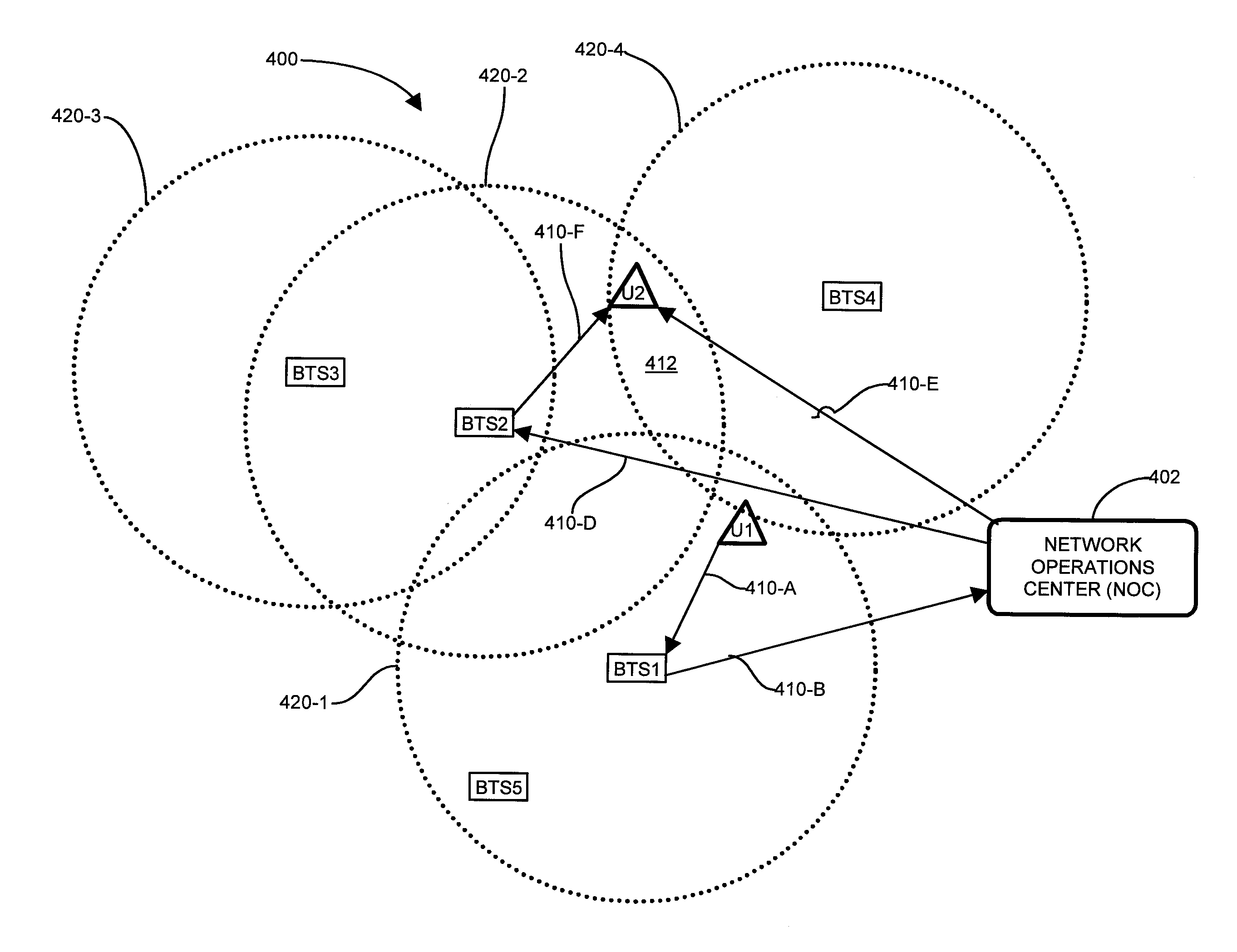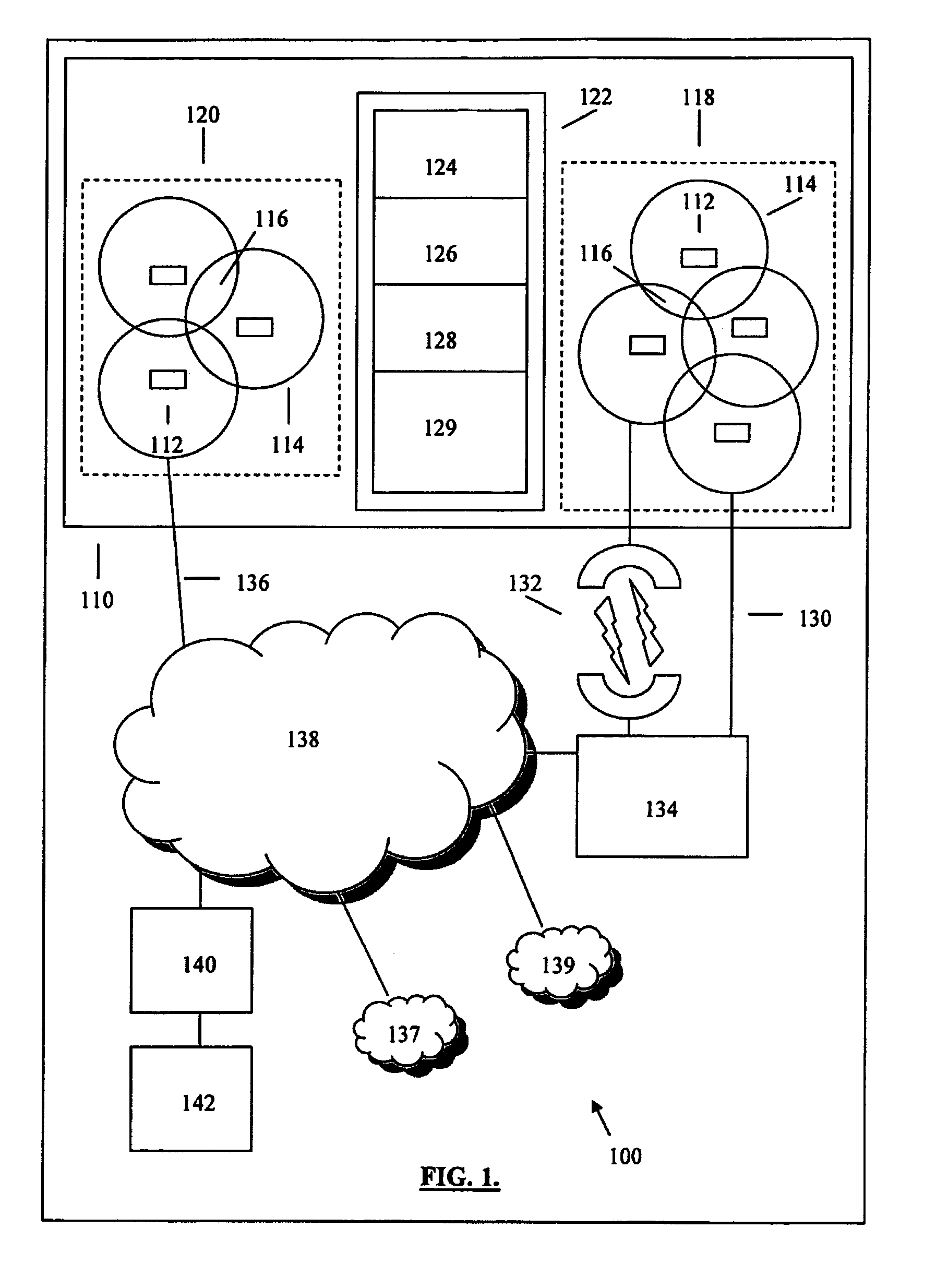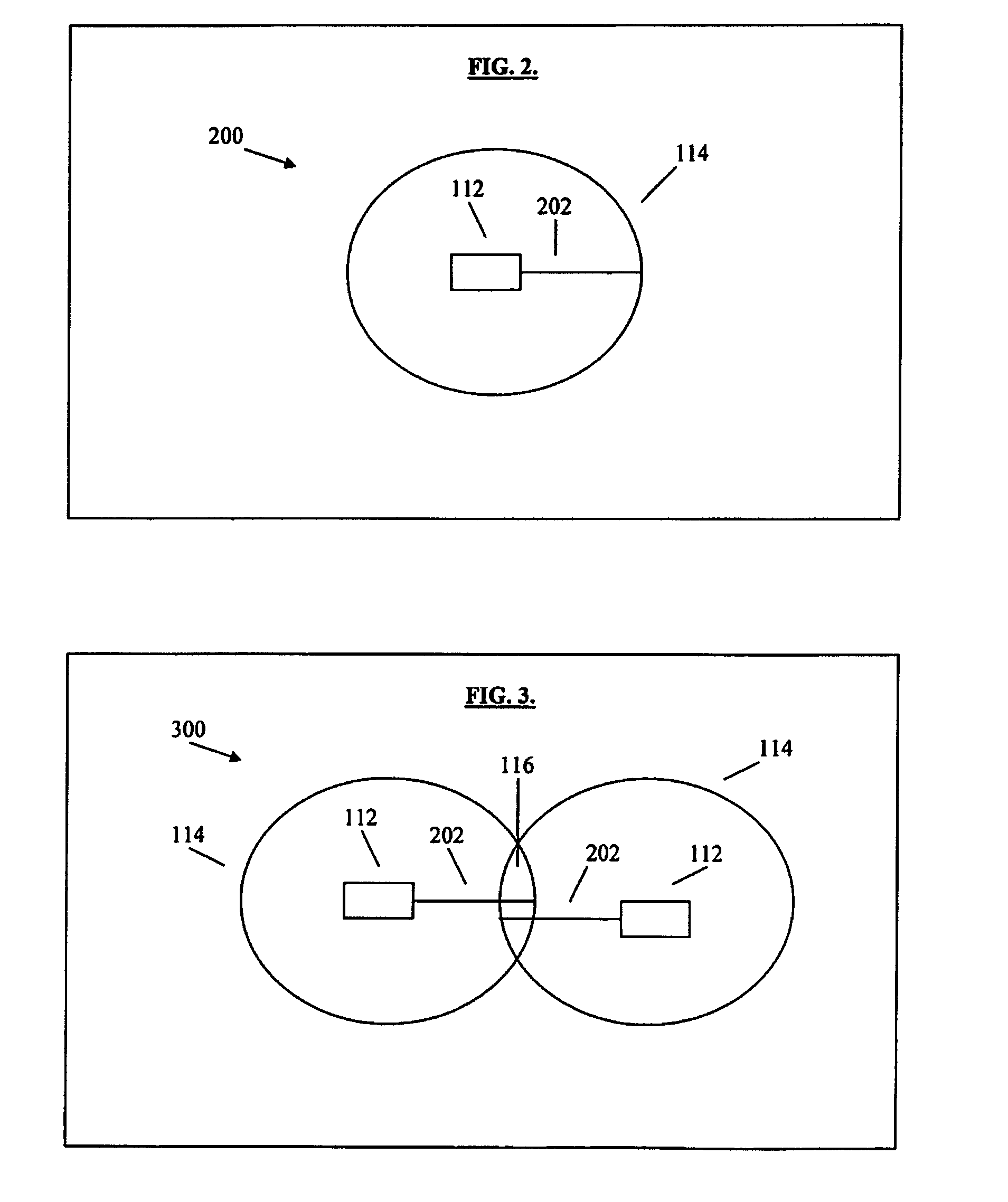Infrastructure for wireless telecommunication networks
a wireless telecommunications network and infrastructure technology, applied in wireless communication, multi-frequency code systems, wireless commuication services, etc., can solve the problems of increasing consumer billing rates that can often inflate far above affecting the review process, and affecting the actual cost of service, etc., to achieve the effect of reducing interferen
- Summary
- Abstract
- Description
- Claims
- Application Information
AI Technical Summary
Benefits of technology
Problems solved by technology
Method used
Image
Examples
Embodiment Construction
[0025]In the present invention, a solution is presented that can reduce the foregoing limitations, and provide the public with a more affordable, robust, and accessible, wireless broadband access service that can be platform independent. This objective may be achieved by introducing a technical specification for building a network infrastructure that can enable national convergence of, for example, voice over IP, video mobility, Internet access from any location, and TV access on a desktop computer or laptop.
[0026]The disclosed technology can operate in the licensed and unlicensed radio spectrum. However, in one embodiment, the disclosed technology utilizes the public domain (unlicensed) spectrum, and avoids interference with other public domain spectrum users.
[0027]In general, the disclosed technology calls for “weaving” a wireless broadband network together from a plurality of base stations deployed in existing locations, e.g., businesses, telephone poles, towers, and operating in...
PUM
 Login to view more
Login to view more Abstract
Description
Claims
Application Information
 Login to view more
Login to view more - R&D Engineer
- R&D Manager
- IP Professional
- Industry Leading Data Capabilities
- Powerful AI technology
- Patent DNA Extraction
Browse by: Latest US Patents, China's latest patents, Technical Efficacy Thesaurus, Application Domain, Technology Topic.
© 2024 PatSnap. All rights reserved.Legal|Privacy policy|Modern Slavery Act Transparency Statement|Sitemap



